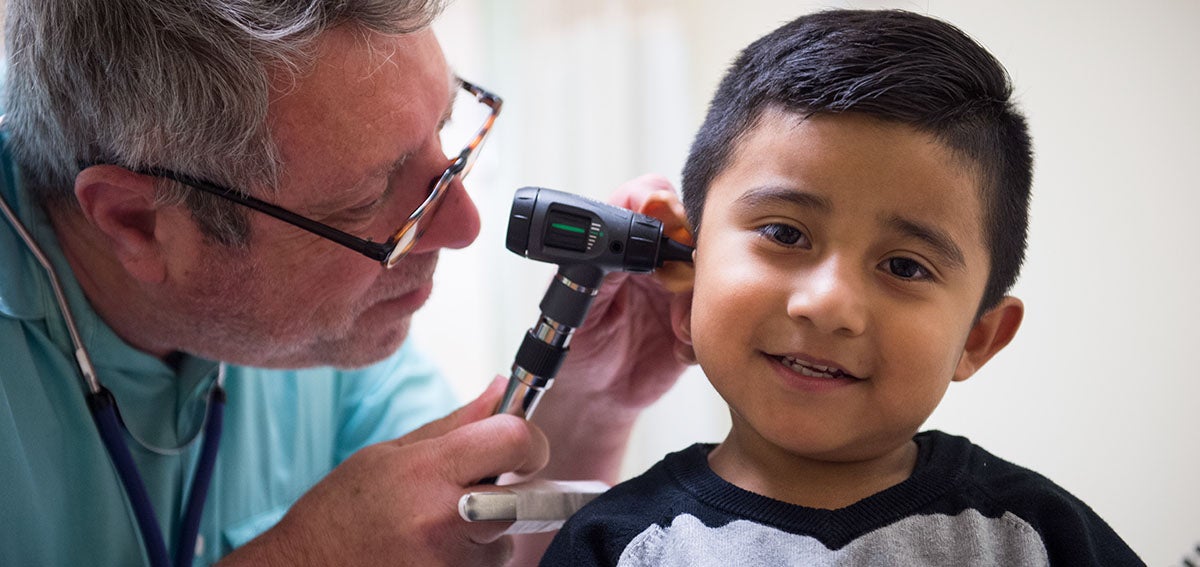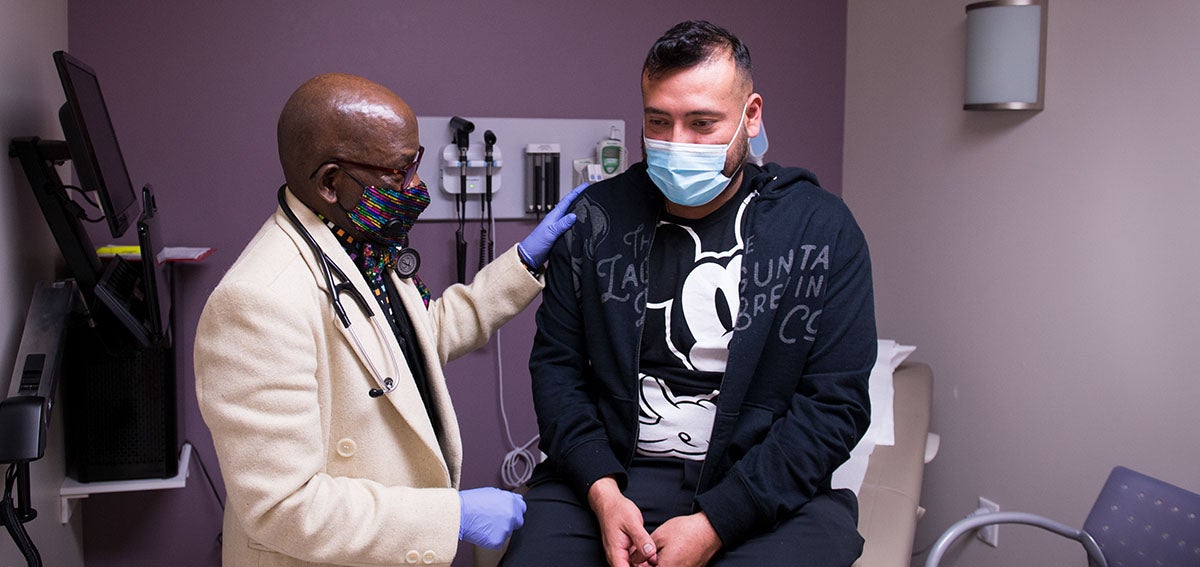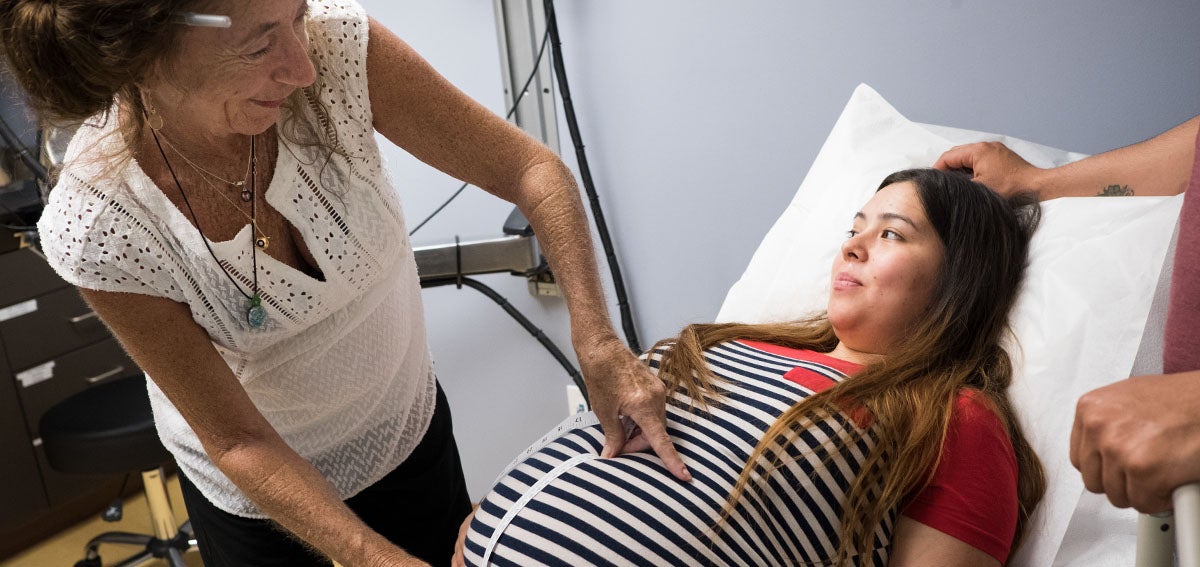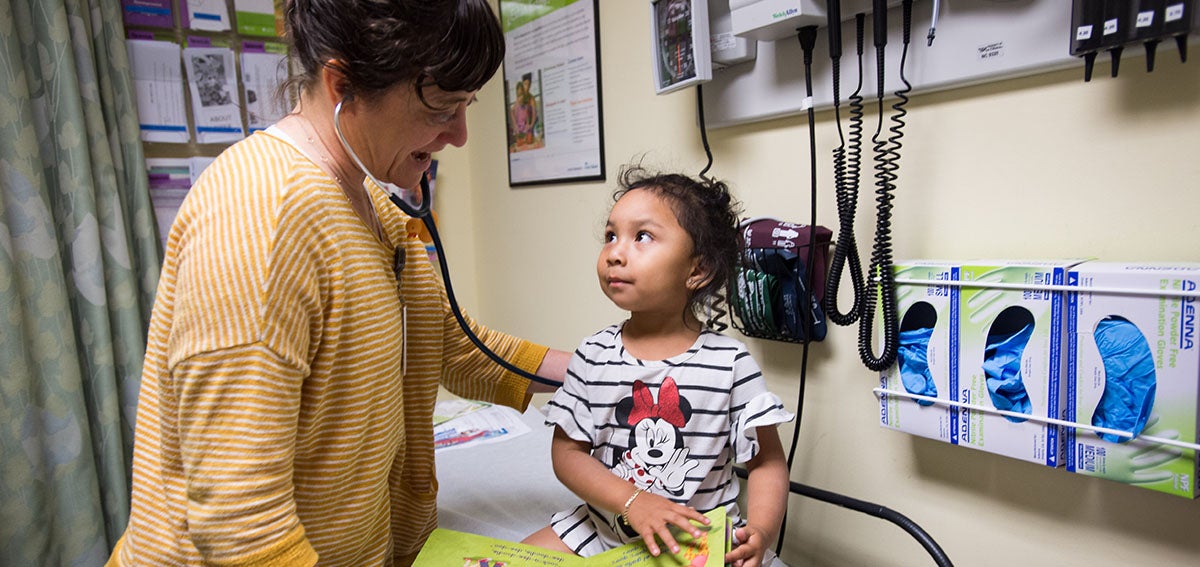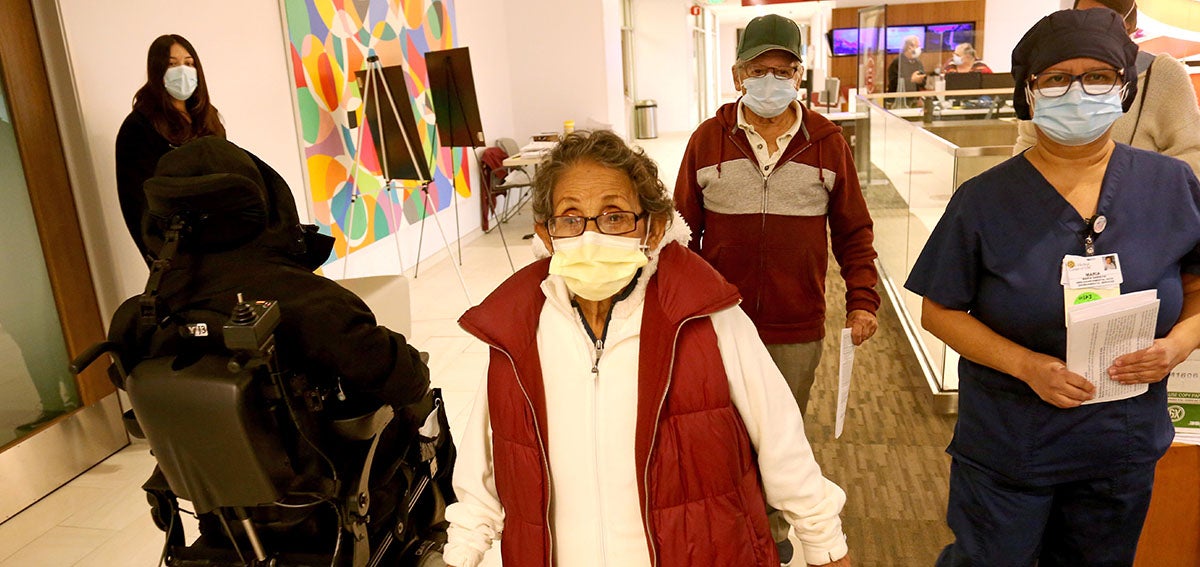
The morning of January 23, Maria Saravia looped her arms through her parents’ and walked them into Norris Healthcare Center at the Keck Hospital of USC in Los Angeles. Her parents, 83-year-old Juan and 81-year-old Sara, were getting their first dose of the COVID-19 vaccine, Brittny Mejia reported in the Los Angeles Times. Sara painted her nails pink to celebrate the occasion.

“You brought the whole family. Congrats,” Claude D’Netto, a registered nurse, said to Maria. “It’s a big deal!”
Maria is an environmental services worker at Keck, where she cleans and sanitizes 24 patient rooms each day on the COVID-19 floor. It’s a risky and highly important job that positions her as “an invisible shield between hospitals and disaster,” Mejia reported in another article.
Last May, Maria lost her best friend to COVID-19, and she has lived in fear of bringing the virus from work into her Boyle Heights home, where she lives with her parents and two daughters. As a frontline health care worker, she was inoculated in December, but she struggled to get Sara and Juan vaccination appointments. So when USC held a vaccine clinic for the elderly relatives of its environmental services, cafeteria, and warehouse workers, Maria leapt at the opportunity.
“I’m blessed,” she responded to D’Netto.
The USC clinic was an effort to boost vaccination equity in the hospital and in a county overwhelmed by California’s winter surge. Approximately one in three Angelenos has been infected with COVID-19 (PDF) since the beginning of the pandemic, according to the Los Angeles County Department of Health Services. But some neighborhoods have been disproportionately harmed by the disease. In wealthy Bel Air, there have only been two recorded COVID-19 deaths since the beginning of the pandemic. The case rate is 3,963 per 100,000 residents. Meanwhile, in Boyle Heights, where the Saravias live, there have been 207 COVID-19 deaths. The case rate is 18,764 per 100,000 residents — nearly five times that of Bel Air.
“The gap between the experiences of those in our Latinx community and all others is frankly horrifying.”
—Barbara Ferrer, director, LA County Department of Public Health
Why did the COVID-19 crisis become so acute in LA County? Experts point to overcrowded housing, the prevalence of essential industries, and an ill-prepared health care system as three drivers of the county’s staggering surge.
It is common to hear of living arrangements like that of Betty Rivera in certain parts of the county. Rivera, who works in childcare, emigrated from El Salvador to LA almost 40 years ago. She lives in a one-bedroom apartment between Koreatown and Pico-Union with five others — three generations and one dog sharing one roof, Tim Arango wrote in the New York Times.
When Rivera contracted COVID-19 at the end of 2020, she tried her best to isolate from the rest of her family, but the apartment was too small. All but one family member fell ill.
More Overcrowded Housing Than in New York City
“Los Angeles may not have the population density of New York, may not have as many skyscrapers or high-rise apartment buildings or jam-packed subways, but the county does have a higher percentage of overcrowded homes — 11%, according to the US Census Bureau — than any other major metropolitan area in America,” Arango reported.
Barbara Ferrer, PhD, MPH, director of the LA County Department of Public Health, has encouraged people to wear masks indoors if they live in overcrowded homes — something Rivera was already doing. But an extra layer of protection is no match for the epidemic of inequality that pervades the most populous county in California and the US.
“If you drive across the vastness of Los Angeles County, starting at the ocean and going east, the shifting landscape tells the story of the housing inequality that has fueled the virus surge,” Arango wrote.
Two of the more expensive neighborhoods to the west, Venice and Marina del Rey, have experienced 13 and zero COVID-19 deaths, respectively. That is a stark contrast to the Koreatown and Pico-Union neighborhoods, where many immigrants with lower-paying jobs like Rivera live. There have been 87 and 168 COVID-19 deaths in those neighborhoods, respectively.
LA’s large manufacturing sector has helped make the county uniquely vulnerable to the coronavirus. Like agricultural jobs, manufacturing jobs must be done in person, often in close quarters.
According to the LA County Department of Public Health, the workplaces with the most COVID-19 cases are Smithfield, a pork processor in Vernon, with 767 cases; Northrup Grumman, a manufacturing facility in Palmdale, with 541 cases; and Fashion Nova Logistics, a fashion warehouse in Santa Fe Springs, with 278 cases. (The department does not provide information on COVID-19-related deaths in these workplaces.)
Increased Deaths Among Cooks, Agricultural Workers
A new study from UCSF confirms the risks of essential frontline jobs during the pandemic. The researchers analyzed occupational data from California death certificates and found that food and agricultural workers (chefs, farmworkers, meat-packers, and more), followed by transportation and logistics workers (people who pack, ship, and deliver goods), have experienced the greatest increases in deaths during the pandemic, Michael Cabanatuan and Jill Tucker reported in the San Francisco Chronicle.
The study also uncovered huge inequities among workers of different racial and ethnic backgrounds. Compared with prepandemic death statistics, Latinx workers had a 36% increase in deaths during the pandemic. Black workers had a 28% increase in deaths, and White workers had a 6% increase. Asian health care workers had a 40% increase in deaths.
The latest data from LA County show COVID-19 deaths among Latinx residents increased over 1,000% between November and the end of January, Rong-Gong Lin II and Luke Money reported in the Los Angeles Times. “While every single race and ethnicity group in LA County has seen a horrendous increase in mortality rates, the gap between the experiences of those in our Latinx community and all others is frankly horrifying,” said Ferrer.
In order to limit the length of inpatient stays and to lower costs, California has long maintained lower numbers of hospital beds compared to other states, Thomas Fuller and Manny Fernandez reported in the New York Times. In normal times, this would be considered efficient, but in the pandemic times, it is a huge weakness. “The wealthiest state in the wealthiest country has 1.8 hospital beds per 1,000 people, a level that exceeds only two states, Washington and Oregon,” Fuller and Fernandez wrote. “California has one-third the number of beds per capita as Poland.”
At the peak of the winter COVID-19 surge, Southern California had 0% of its licensed ICU beds available for new patients. Predictably, the ICU crisis has been more acute in the parts of LA with fewer economic and health care resources.
COVID-19 Census in One LA Hospital Reaches 65%
Take Martin Luther King Jr. Community Hospital in South LA, which has the fewest hospital beds per 100,000 people in Los Angeles County. Most of its patients are enrolled in Medi-Cal, and many hold jobs in risky essential industries or live in overcrowded housing. “Our small hospital now has more COVID patients than hospitals that are three to four times larger in LA County,” CEO Elaine Batchlor, MD, MPH, told NPR’s Leila Fadel.
On Christmas Eve, with COVID-19 patients making up a whopping 65% of the hospital’s patient population, Batchlor sent Governor Gavin Newsom an urgent letter asking for the state’s help. The community needed short-term solutions — like the three National Guard Medical Strike Teams and approximately 90 nurses and respiratory therapists that the state sent. But long-term changes are essential too. “It is time to address the separate and unequal health system that has been heartbreakingly exposed by COVID-19,” Batchlor wrote.
Lack of funding is a major issue for Martin Luther King Jr. Community Hospital. It loses around $10 million a year running the emergency department and relies on philanthropy to subsidize salaries for doctors and nurses. “We’ve created a tiered financing system for health care with commercial at the top and Medicaid and uninsured at the bottom,” Batchlor told Fadel.
On January 25, Newsom lifted the regional stay-at-home order, returning counties to the color-coded, tiered system for reopening. LA County is in the purple tier, which allows outdoor dining at restaurants to resume and hair and nail salons to open for indoor services at 25% capacity.
However, “the relaxation of restrictions comes as large parts of Southern California are still recording high death and hospitalization rates and many hospitals in Los Angeles County continue to be overwhelmed with COVID-19 patients,” Thomas Fuller and Jill Cowan wrote in the New York Times.
With new coronavirus variants appearing around the world, Californians must remain vigilant, Ali Mokdad, PhD, professor of health metrics sciences at the University of Washington Institute for Health Metrics and Evaluation, told Soumya Karlamangla and Rong-Gong Lin II in the Los Angeles Times. “The advice should be: ‘This is here to stay,’” Mokdad said. “This virus is so stubborn. You make a tiny little mistake, it will go after that mistake.”
Are you taking extra precautions to protect yourself from the new coronavirus variants? Email me.
Authors & Contributors



